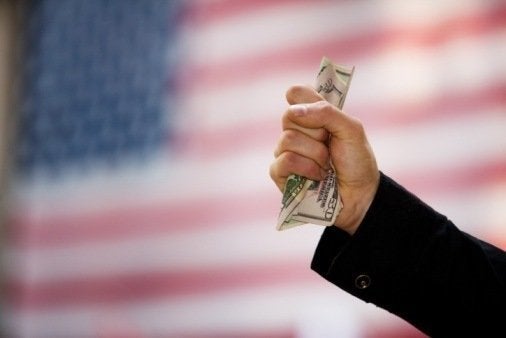
Last week, investigators at the Center for American Progress released a bombshell, making public confidential materials penned by energy tycoon Charles Koch for a conference of well-heeled conservative activists this past June. These materials also included an invitation to far-right money men and women to another gathering scheduled for next January, to plan the takeover of the White House in 2012.
While helping reveal the right's political agenda, these materials also show just how central the courts are to their plans. For one surprising example, two names topped the list of luminaries who had previously attended Koch's gatherings: Supreme Court Justices Antonin Scalia and Clarence Thomas. Furthermore, consider the Chamber of Commerce, and the topic for discussion they chose for Koch's gathering this past June. In the middle of a heated battle over the control of Congress -- a fight that has crystallized the Chamber's status as a leading financier of conservative causes -- the Chamber chose to speak about the opportunity to win judicial elections and capture the state courts.
This laser-like focus on the courts is missing on the left, which is far more focused on winning elections and legislative battles. But what if those legislative victories are overturned by the activist rulings of conservative judges? That is already happening in cases such as Citizens United v. FEC, where last January the Supreme Court gutted by a 5-4 vote the McCain-Feingold Bipartisan Campaign Reform Act -- a law that progressive funders and activists had spent more than a decade mobilizing to produce.
Citizens United is hardly an isolated example. In June, in the wake of Citizens United, the organization I head, Constitutional Accountability Center, comprehensively examined cases decided by the Supreme Court in which the Chamber of Commerce filed briefs since Justice Samuel Alito began participating in decisions in early 2006. Over this nearly five-year period (through the end of June 2010), the Chamber prevailed in 68 percent of its cases. The Chamber was even more successful in the October 2009 Term, winning over 80 percent of its cases (13 victories in 16 cases). Our study also demonstrated a pronounced ideological divide on the Court on Chamber positions: the Court's conservative majority (Chief Justice Roberts and Justices Alito, Kennedy, Scalia, and Thomas) collectively voted for the Chamber 74 percent of the time while the Court's moderate/liberal bloc (including former Justice David Souter, who was on the Court for most of these rulings) was more centrist, collectively casting 43% of its votes in favor of the Chamber.
The response to our June study, even among many liberals in the Washington legal community, was muted. Indeed, Justice Breyer -- who voted for the Chamber less than half the time in our June study -- came to the Chamber's defense, telling Bloomberg News that the Chamber's recent success before the Court was nothing new because the Chamber has always done well before the Court.
A follow-up study released today by Constitutional Accountability Center demonstrates that to be flat wrong. CAC studied the 5-year period immediately before any of the members of the Court's current conservative majority took the bench. During the five Supreme Court Terms from October 1981 to June 1986, the Court ruled in the Chamber's favor just 43% of the time. Even more striking was the lack of any comparable ideological divide on the Court during this earlier era. For example, the voting records of then-Justice William Rehnquist, widely viewed as the most conservative member of the Court of that era, and Justice William Brennan, its most liberal member, differed by only three points in support for the Chamber -- 47% compared to 44%, respectively. Rehnquist and Brennan waged heated battles over hot-button social issues such as reproductive choice and affirmative action, but they did not battle often over the law's impact on corporations.
Not surprisingly, the Justice voting most often in favor of the Chamber in our earlier study was Lewis Powell. Justice Powell was a moderate on social issues and the Burger Court's swing Justice on those topics. But he had also represented the Chamber of Commerce in private practice and penned a now famous 1971 memorandum instructing the Chamber to take advantage of a "neglected opportunity in the courts."
For the past 40 years, the Chamber of Commerce and its allies have taken to heart Justice Powell's advice and worked tirelessly and step-by-step to push for a judiciary that is sympathetic to its legal arguments. How sympathetic? Consider that during the period of our 1981-1986 study, Justice Powell -- the most pro-Chamber judge of his era -- voted with the Chamber 59 percent of the time. His replacement, Justice Anthony Kennedy -- the most moderate member of the Roberts Court's conservative wing -- voted with the Chamber 69 percent of the time during the period of our study of the Roberts Court.
There has been a ton of coverage this election season of the Chamber of Commerce's undisclosed donors and multi-million dollar expenditures on Congressional races across the country. But the Chamber's efforts in the judicial arena have remained largely underneath the radar. This imbalance of attention is unfortunate, because while the success of the Chamber's attempt to influence the mid-term election remains to be seen, we already know that the Chamber's decades-long effort to influence the judiciary has been a resounding success.